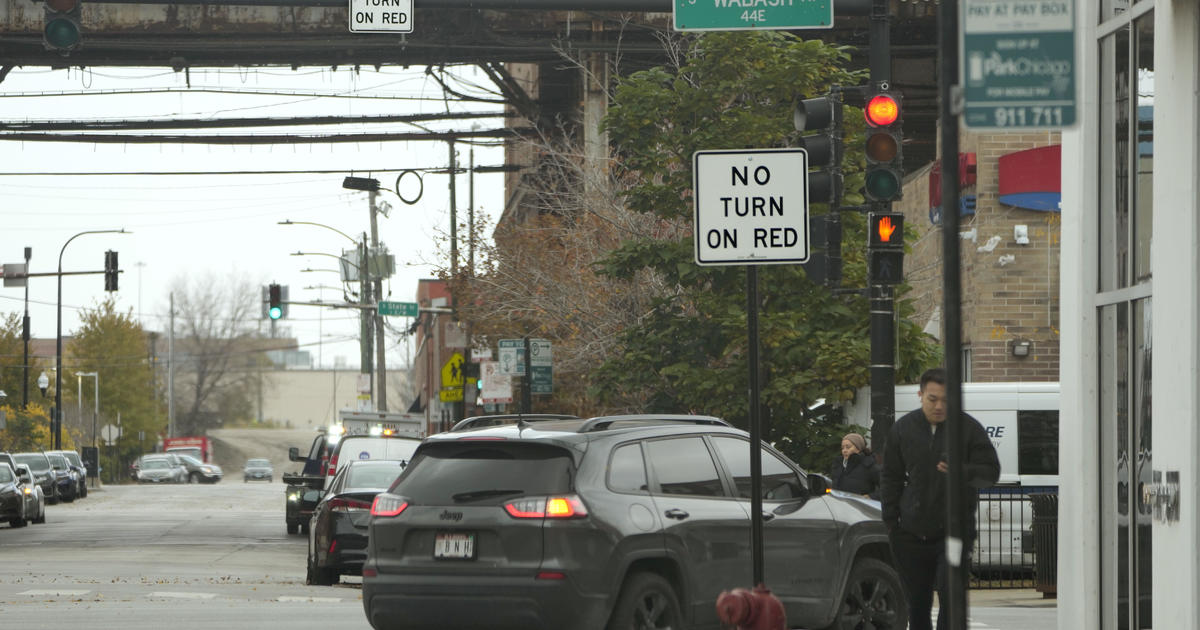Sophee Langerman was on her way to a bicycle safety rally in Chicago’s Lakeview neighborhood in June when a car turning right rolled through a red light and slammed into her bike, which she was walking off the curb and into the crosswalk.
The car was moving slowly enough that Langerman escaped serious injury, but the bicycle required extensive repairs. To Langerman, it’s another argument for ending a practice that almost all U.S. cities have embraced for decades: the legal prerogative for a driver to turn right after stopping at a red light.
A dramatic rise in accidents killing or injuring pedestrians and bicyclists has led to a myriad of policy and infrastructure changes, but moves to ban right on red have drawn some of the most intense sentiments on both sides.
Washington, D.C.'s City Council last year approved a right-on-red ban that takes effect in 2025. New Chicago Mayor Brandon Johnson’s transition plan called for “restricting right turns on red,” but his administration hasn’t provided specifics. The college town of Ann Arbor, Michigan, now prohibits right turns at red lights in the downtown area.



Yup and I’d LOVE to see some of those four lane roads get turned into two or three lane roads with protected bike lanes
However, in a city that’s primarily optimized for cars and lacking in other forms of infrastructure, the main impact of traffic calming measures is to make it really hard to get anywhere in an efficient manner. I don’t believe it significantly improves safety, but it will undoubtedly make a lot of people who rely on their cars absolutely miserable.
The root of the problem is that we simply have too many cars on the roads to begin with. However, we can’t reasonably ask people to stop driving until the alternatives are as safe and convenient as a car. The primary focus should be on urban planning that makes walking, biking, or taking light rail an attractive alternative. In the case of walking and cycling, this overwhelmingly means dedicated infrastructure.
You’ve got that entirely backwards: driving must become painful in order for people to support funding alternatives.
Edit: downvote me all you like, folks, but it doesn’t change the fact that we’ve been trying to do it the other way for decades and it doesn’t fucking work.
You’re being downvoted, but that’s exactly what many europeans cities have been doing for many years now. When going into the city center by car is the worst option, people choose other ways to go.
Did those cities already have good mass transit set up to facilitate a better option, I legit don’t know? I like this plan but I wonder if it will be successful with how absolute dog shit this country’s mass transit is.
Maybe, but that’s a moot point because so did cities in the US. Take some of the biggest poster-child cities for car-dependency, Atlanta and Los Angeles, for instance.
Here’s what Atlanta’s streetcar network looked like in 1924:
And here’s what LA’s streetcar network looked like in 1938:
We had good cities with public transit in the US. We didn’t build our cities – even sunbelt ones – for the car; we demolished them for the car.
One more example. Here’s downtown Houston from the 1970s:
All those parking lots used to have buildings on them.
The difference is that those cities are denser, better laid out for walkability, and have tremendously better public transport.
But if you can’t get people to support alternatives, how will you get them to support making driving more painful?
Even if the government does nothing, that’ll happen naturally over time as increasing traffic chokes itself out.